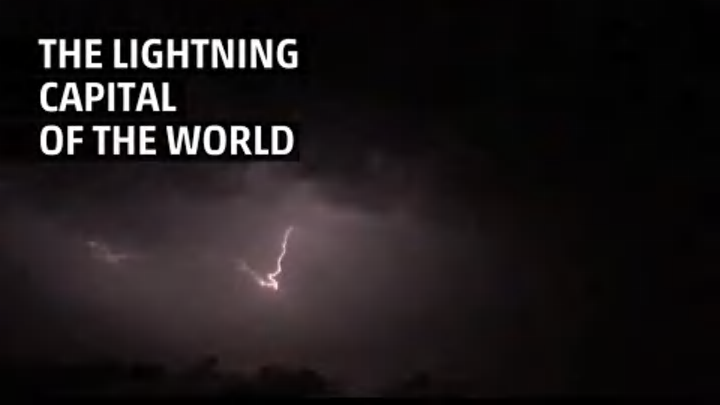An occasional lightning show is great, but imagine seeing one most nights. Residents who live near Venezuela’s Lago de Maracaibo, or Lake Maracaibo, don’t have to wonder about that scenario—they experience lightning storms for an average of 260 nights a year. For an idea of what that looks like, check out the video above from The Weather Channel.
In 2016, Lake Maracaibo officially became the planet's lightning capital after researchers conducted a major study of the world’s lightning hotspots. The experts noticed the lake’s climate after collecting years of data from NASA’s Lightning Imaging Sensor on its Tropical Rainfall Measuring Mission satellite. Research shows that Lake Maracaibo's lightning storms are most active in September and October when it rains.
The lake sees an average of about 233 flashes per square kilometer yearly, surpassing Africa’s Congo Basin, the world’s former lightning hotspot. More specifically, the activity occurs where Lake Maracaibo meets the mouth of the Catatumbo River.
To understand this phenomenon, examining how lightning works is important. Although some disagreements exist on how clouds are electrified, scientists concur that lightning happens when a cloud’s positive and negative charges become separated and when storms produce ice. Wind turbulence, which usually occurs during thunderstorms, makes it likely for charges to separate. When that happens, negatively charged particles collect near the bottom of the cloud while positive ones gather near the top, causing electrical currents.
So why does lightning form more frequently over Lake Maracaibo? The answer most likely lies in the area’s landscape and wind currents. Mountains surround the lake except to the north. This topography allows the warm waters from the Caribbean Sea to enter the lake. The climate becomes humid as the water evaporates under the sun's rays. Once the sun sets, cold wind currents from the surrounding mountains meet the warm air, which produces cumulonimbus clouds. The lightning show takes center stage when humid air droplets touch ice crystals from the cold air.
Some report that the lightning is bright enough to read a newspaper at night. Hopefully, the locals can get some shuteye.
Read More Stories About Weather:
